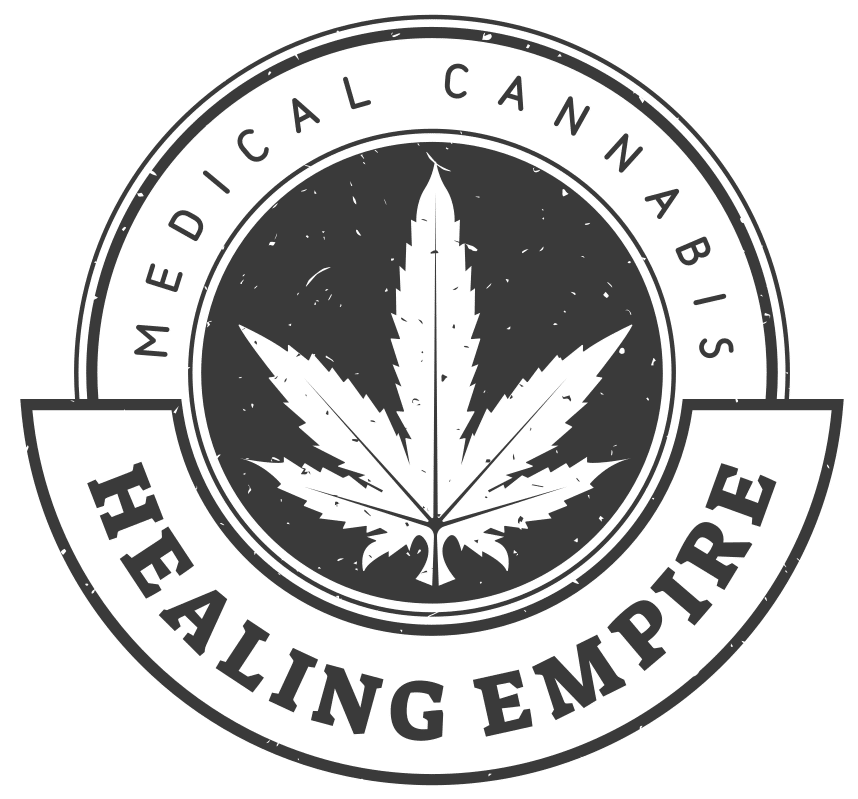Blog
The Fascinating World of Magic Mushroom Research
Magic mushrooms have captivated human curiosity for centuries, and today, scientific research is shedding new light on their potential benefits. The study of magic mushrooms, specifically their main psychoactive compound psilocybin, is a rapidly evolving field that encompasses a wide range of disciplines. From neuroscience to psychology, anthropology to pharmacology, researchers are delving into the fascinating world of magic mushroom research to explore their therapeutic potential, unravel their mechanisms of action, and understand their impact on the human mind.
Exploring the Therapeutic Potential
Unraveling the Mechanisms of Action
Magic mushrooms have long been known to induce altered states of consciousness and profound psychological effects. But how exactly do they work in the brain? This question has intrigued neuroscientists and researchers in the field of psychopharmacology. Psilocybin, the primary psychoactive compound found in magic mushrooms, binds to serotonin receptors in the brain, particularly the 5-HT2A receptor. This interaction leads to changes in neural activity and connectivity, ultimately resulting in the unique subjective experiences associated with magic mushroom use.
To unravel the mechanisms of action, researchers are employing cutting-edge imaging techniques such as functional magnetic resonance imaging (fMRI) and positron emission tomography (PET). These tools allow scientists to observe the brain in real-time and map the changes that occur during psilocybin administration. Studies have revealed that psilocybin influences various brain regions involved in emotion, cognition, and perception, including the default mode network (DMN) and the prefrontal cortex.
The DMN, a network of brain regions associated with self-referential thinking and mind-wandering, is notably disrupted by psilocybin. This disruption may explain the altered sense of self and ego dissolution reported by individuals under the influence of magic mushrooms. Moreover, psilocybin enhances the communication and connectivity between brain regions that are usually separate, leading to a more integrated and flexible state of consciousness.
By gaining insights into the mechanisms of action, researchers hope to understand how magic mushrooms exert their therapeutic effects. For instance, studies have shown that psilocybin-assisted therapy can reduce symptoms of depression and anxiety in individuals facing life-threatening illnesses. The altered states of consciousness induced by magic mushrooms may promote introspection, emotional breakthroughs, and a heightened sense of connectedness, facilitating the therapeutic process.
Unraveling the mechanisms of action also helps researchers identify potential risks associated with magic mushroom use. By understanding how psilocybin affects brain function, scientists can better predict and manage any adverse effects that may arise. This knowledge is crucial for developing safe and effective therapeutic protocols and ensuring the responsible use of magic mushrooms.
As research progresses, scientists aim to delve deeper into the complexities of psilocybin’s effects on the brain. They seek to understand the nuances of dosage, timing, and set and setting, all of which contribute to the overall psychedelic experience. By unraveling the intricate mechanisms of action, researchers are paving the way for a better understanding of magic mushrooms and their potential to revolutionize mental health treatments.
Examining the Cross-Cultural Significance
Magic mushrooms have a rich and diverse history of cultural and ceremonial use that spans different societies and periods. Anthropologists and ethnobotanists are delving into the cross-cultural significance of magic mushrooms to gain a deeper understanding of their impact on societies. By studying the cultural practices and beliefs surrounding these mystical fungi, researchers aim to appreciate their historical and contemporary significance while shedding light on the broader cultural contexts in which they are utilized.
In many indigenous cultures, magic mushrooms have been revered as sacred plants with profound spiritual and healing properties. They have been incorporated into ancient rituals and ceremonies, serving as a means of connecting with the divine, facilitating communication with ancestors, and gaining insight into the mysteries of the universe. These practices highlight the deep spiritual and cultural significance that magic mushrooms hold within these societies.
Examining cross-cultural practices and beliefs surrounding magic mushrooms provides researchers with valuable insights into the social and cultural dynamics of different communities. It allows them to understand the roles these fungi play in shaping belief systems, traditions, and communal bonds. By studying the rituals, symbolism, and stories associated with magic mushrooms, researchers can gain a comprehensive understanding of their cultural significance and their place within the fabric of society.
Exploring the cross-cultural significance of magic mushrooms can foster appreciation and respect for the diversity of human experiences and belief systems. It helps to challenge ethnocentric perspectives and encourages a more inclusive and holistic understanding of the human relationship with nature and altered states of consciousness. Through cross-cultural research, researchers aim to bridge cultural divides and promote intercultural dialogue, fostering a deeper appreciation for the diverse ways in which magic mushrooms have been integrated into different societies.
By examining the historical and contemporary uses of magic mushrooms across cultures, researchers can also draw parallels and identify common themes that transcend geographical boundaries. This comparative approach allows for a broader understanding of the potential benefits, risks, and social implications associated with magic mushroom use.
The examination of the cross-cultural significance of magic mushrooms provides invaluable insights into their historical and contemporary role in various societies. By studying their cultural practices, beliefs, and broader societal contexts, researchers can gain a deeper appreciation for the profound impact these fungi have had on human cultures throughout history. This exploration fosters intercultural dialogue, challenges ethnocentric perspectives, and promotes a more inclusive understanding of the human relationship with magic mushrooms and altered states of consciousness.
Assessing Safety and Harm Reduction
As the interest in magic mushrooms continues to grow, researchers and scientists are placing significant emphasis on assessing the safety profile of psilocybin and implementing harm-reduction strategies. The goal is to ensure that individuals who choose to explore the potential benefits of magic mushrooms can do so safely and responsibly.
Researchers are conducting studies to better understand the potential risks associated with magic mushroom use. This includes investigating factors such as dosage, frequency of use, and potential interactions with other medications or substances. By gaining a comprehensive understanding of these risks, scientists can provide accurate information and guidelines to users, healthcare professionals, and policymakers.
In addition to risk assessment, the development of harm reduction strategies is a crucial aspect of magic mushroom research. Harm reduction aims to minimize any potential adverse effects and promote responsible use. This includes educating users about the importance of informed consent, providing accurate dosage information, and highlighting the significance of set and setting.
Set and setting refer to the mindset and physical environment in which the magic mushroom experience takes place. Researchers recognize the importance of creating a safe, comfortable, and supportive environment for individuals embarking on a magic mushroom journey. This includes considerations such as emotional support, trained trip sitters, and appropriate lighting and ambiance.
The integration of harm reduction practices extends beyond the experience itself. Researchers emphasize the significance of proper integration of the insights and lessons gained from magic mushroom experiences into everyday life. Integration practices such as journaling, meditation, and mindfulness can help individuals process and integrate their experiences, leading to lasting personal growth and transformation.
By assessing safety and implementing harm reduction strategies, researchers and scientists are working to ensure that the use of magic mushrooms is approached responsibly. Through evidence-based guidelines and education, individuals can make informed decisions and reduce potential risks. As the field of magic mushroom research continues to advance, the focus on safety and harm reduction remains paramount, ensuring that the exploration of these mystical fungi is conducted in a manner that prioritizes the well-being of individuals and maximizes the therapeutic potential of these substances.
Exploring New Frontiers and Future Possibilities
Magic mushroom research is a field brimming with potential, and researchers are actively exploring new frontiers and future possibilities. As the scientific community delves deeper into the therapeutic applications of magic mushrooms, they are discovering novel ways to optimize treatment protocols and enhance their efficacy. One avenue of exploration involves the development of synthetic analogs with improved safety profiles. By modifying the chemical structure of psilocybin, scientists aim to create compounds that retain therapeutic benefits while minimizing potential risks.
The integration of magic mushroom research with other disciplines, such as artificial intelligence (AI) and virtual reality (VR), presents exciting possibilities. AI algorithms can analyze vast amounts of data collected from clinical trials, providing valuable insights into the mechanisms of action, treatment response predictors, and personalized therapy approaches. By harnessing AI, researchers can accelerate the understanding of magic mushroom effects and tailor treatments to individual needs.
Virtual reality, on the other hand, offers a unique opportunity to simulate controlled environments for therapeutic journeys. By immersing individuals in virtual worlds, therapists can guide and support them through transformative experiences, replicating the set and setting of a traditional psychedelic session. Virtual reality also allows for the manipulation of various elements, such as visuals, sounds, and interactions, to enhance therapeutic outcomes and customize the journey to address specific mental health concerns.
The future of magic mushroom research includes exploring innovative therapeutic applications beyond traditional mental health conditions. Studies are underway to investigate the potential of psilocybin in treating substance use disorders, cluster headaches, and existential distress in patients with life-threatening illnesses. These groundbreaking studies open up new possibilities for addressing challenging conditions that have been resistant to conventional treatments.
As the field progresses, collaboration among researchers, clinicians, and policymakers becomes crucial. Establishing ethical guidelines, regulations, and standards for training and certification will ensure safe and responsible practices. This collective effort will pave the way for a future where magic mushroom therapy can be accessed by those who can benefit from it while minimizing potential risks and promoting integration within existing mental health frameworks.
The future of magic mushroom research holds immense promise. Through the development of novel therapeutic applications, optimization of treatment protocols, and the integration of AI and VR technologies, researchers are pushing the boundaries of our understanding of consciousness and mental health treatments. By embracing these new frontiers, we can unlock the full potential of magic mushrooms and create a future where psychedelic-assisted therapy becomes a transformative tool in healing and personal growth.
Exploring the Fascinating World of Magic Mushroom Research
The world of magic mushroom research is a captivating and rapidly evolving landscape. As scientists explore the therapeutic potential, unravel the mechanisms of action, and examine the cultural significance, our understanding of these mystical fungi deepens. With a focus on safety, harm reduction, and future possibilities, the research community is dedicated to unlocking the mysteries of magic mushrooms and harnessing their potential to transform mental health treatments. Through continuous exploration and scientific inquiry, we embark on an exciting journey into the fascinating world of magic mushroom research.


